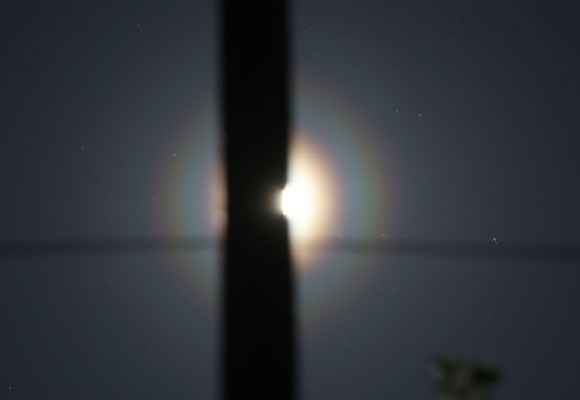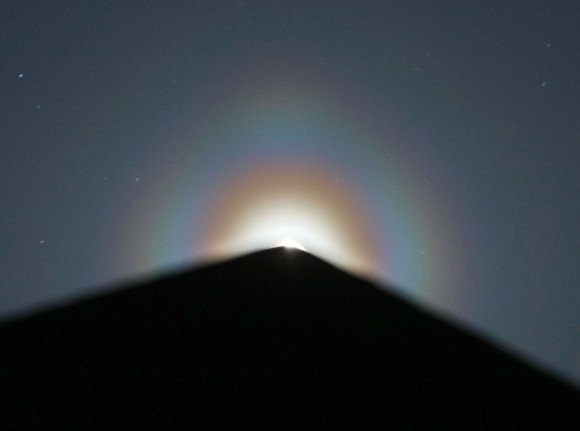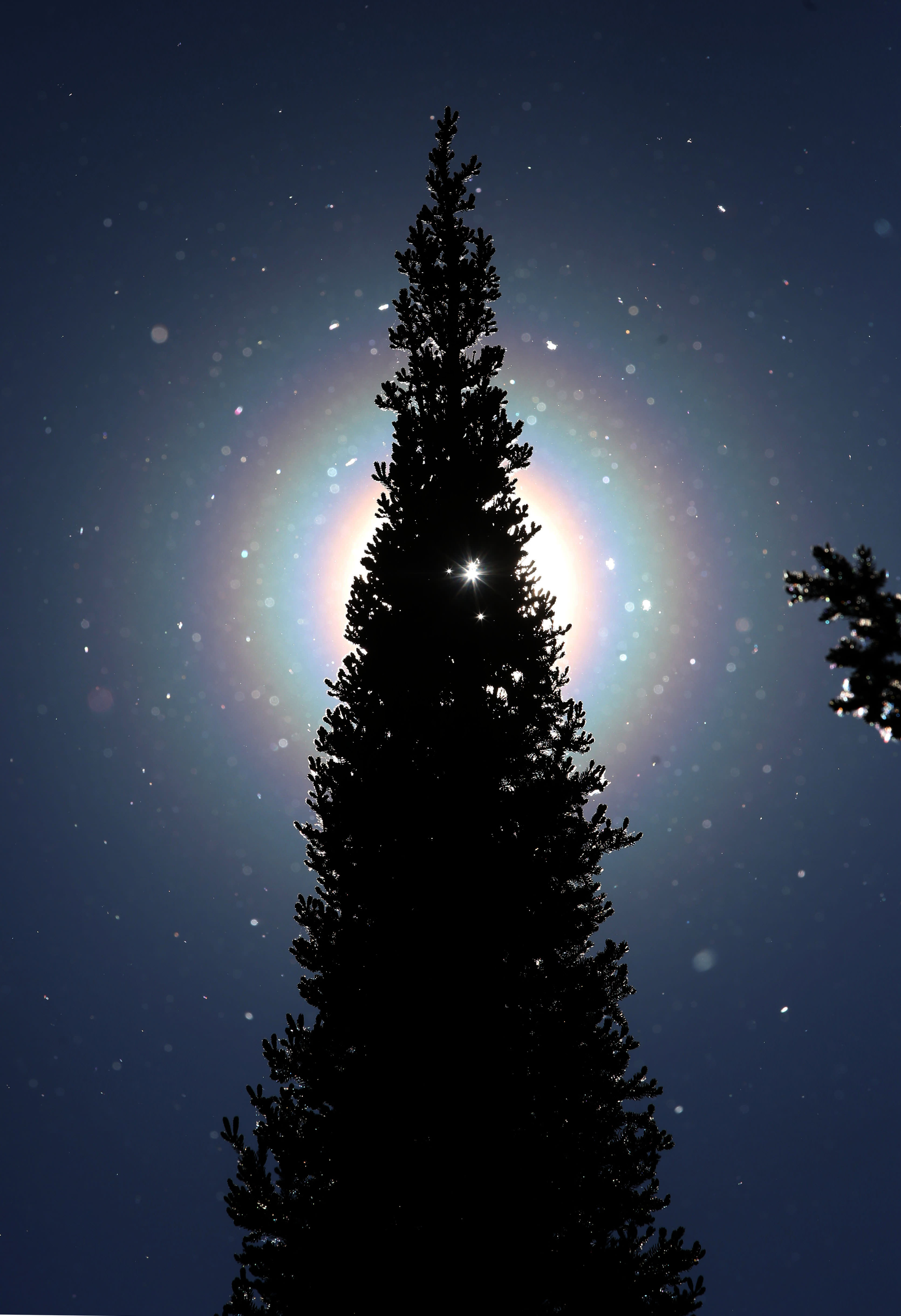Don’t be surprised if you look up in the Sun’s direction and squint with itchy, watery eyes. You might be staring into billows of tree pollen wafting through your town. It’s certainly been happening where I live.
When conditions are right, billions of microscopic pollen grains consort to create small, oval-shaped rings around a bright Moon during the peak of the spring and early summer allergy season. With the Full Moon coming up this week, there’s no better time to watch for them.

Because they’re often lost in the glare of the Sun or Moon, the key to finding one is to hide the solar or lunar disk behind a thick tree branch, roof or my favorite, the power pole. Look for a telltale oval glow, sometimes tinted with rainbow colors, right up next to the Moon or Sun’s edge. Common halos, those that form when light is refracted by ice crystals, span 44° compared to pollen coronas, which measure just a few degrees in diameter.
To see or photograph coronas, you need plenty of light. The Sun’s ideal, but so is the Moon around full. Fortunately, that happens on June 2, neatly fitting into the sneezing season. Last night, the same grains — most likely pine tree pollen — also stoked a lunar corona. Once my eyes were dark adapted and the Moon hidden by an arboreal occulting instrument (tree branch), it was easy to see.

One of things you’ll notice right away about these biological bullseyes is that they’re not circular. Pollen coronas are oval because the pollen particles are elongated rather than spherical like water droplets. When light from the moon or sun strikes pollen, the minute grains diffract the light into a series of closely-spaced colored rings. I’ve read that pine and birch produce the best coronas, but spruce, alder and and others will work, too.
And here’s another amazing thing about these coronas. You don’t need a transparent medium to produce them. No ice, no water. All that’s necessary are very small, similarly-shaped objects. Light waves are scattered directly off their surfaces; the waves interfere with one another to create a diffraction pattern of colored rings.

Pollen coronas tend to become more elongated when the Sun or Moon is closer to the horizon, so look be on the lookout during those times for more extreme shapes. For some reason I’ve yet to discover, pollen disks sometimes exhibit “bumps” or extensions at their tops, bottoms and sides.
So many of us suffer from allergies, perhaps the glowing presence of what’s causing all the inflammation will serve as partial compensation for our misery.


Allergies? I suffered for over 40 years, since I was 8 y.o. from especially pine pollen, ragweed, fresh-cut grass, etc., asthma, too, often for two+ months a year. It was awful, I tell you… awful, every single year. And, I finally found what works for me, and haven’t had much more than the most minor of symptoms for the last 7-8 years after taking CoQ10. 100/150mg q d till the season passes. Can’t recommend it enough. It’s something like a nutritional supplement. Co-enzyme Q10. Sold as “CoQ10”.
…
Thanks for the article, Bob. Curious halos!
Thanks Plenum. Glad you found a solution. Now you’ll see the coronas without having to wipe your eyes first.
Good stuff. Interesting. Especially the oval pattern.
Yeah, my head hurts about 3 days every spring until I adjust. I may have to try the CoQ10.